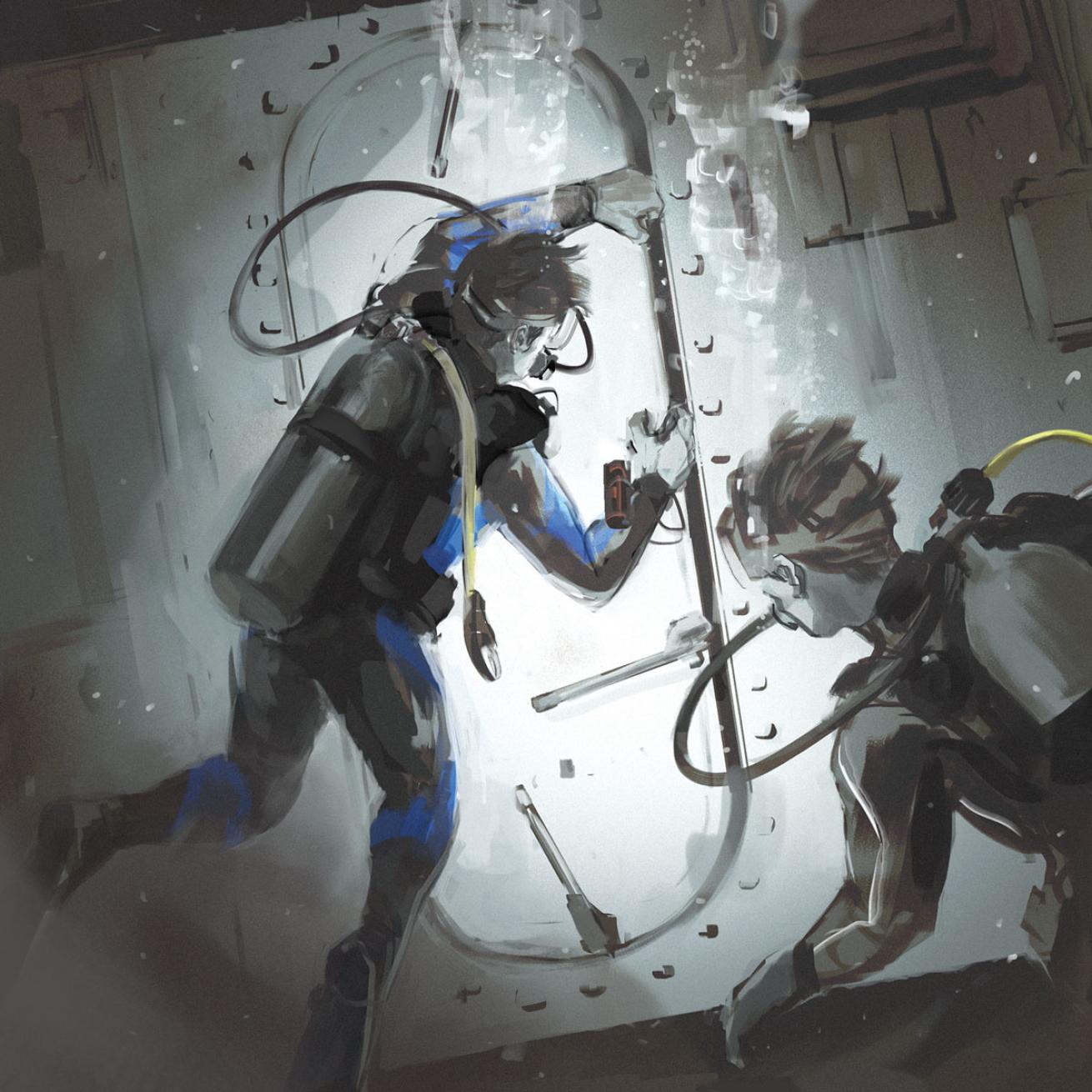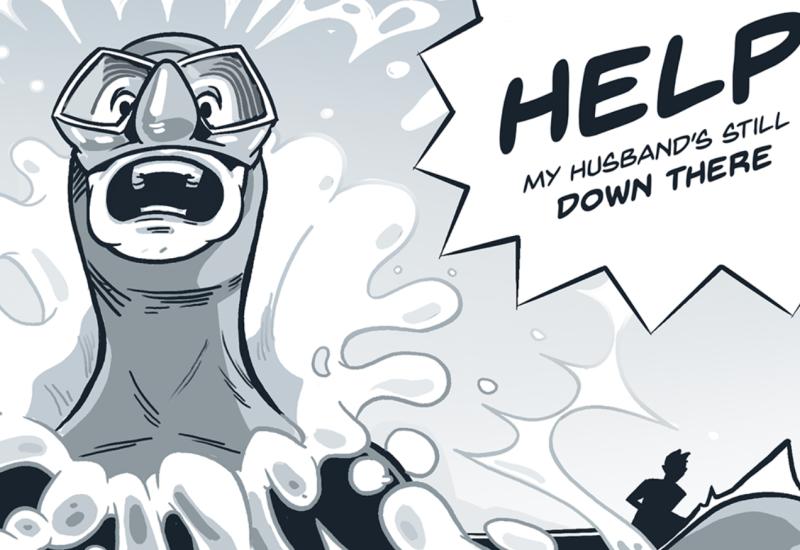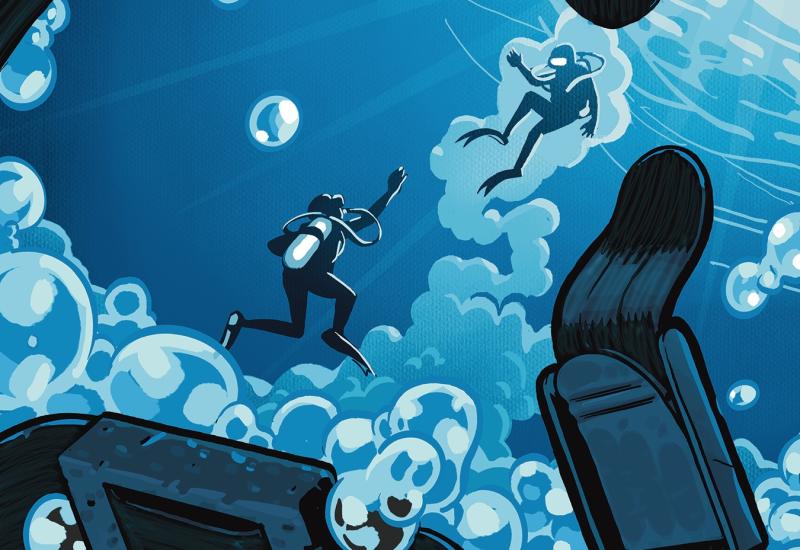A Wreck Dive Costs This Unprepared Instructor His Life
Being unprepared for wreck penetration spells disaster for a showoff dive instructor.

Miko MaciaszekThis wreck rule-breaker put another divers life in danger due to his own overconfidence.
Leon loved the excitement of the dive. He loved going places no one else had ever gone — or had the nerve to try. He was confident in his own abilities and was never afraid of a challenge or risk. As he slipped through the small opening in the wreck, he was rewarded with the view of the engine room.
Leon was sure he was the first person to see it since the ship went down. The hatch to this part of the ship had been welded shut to keep divers out, but the weld had recently broken, and he hadn’t thought twice about prying it open.
He didn’t have a line with him to guide his way back out, but he wasn’t worried about it. He knew he could find his way. He would be in there for only a minute.
He was sure the newbie diver with him was going to remember this experience for the rest of his life.
THE DIVER
Leon was a dive instructor. He enjoyed teaching others to dive and experience the underwater world.
He got a bigger thrill from making dives that no one else made, or in his mind “could” make. He was known for taking chances and making high-risk dives, including deep solo dives. Leon was 42 years old, a longtime heavy smoker and overweight.
THE DIVE
Leon joined a group of divers from his local dive shop on a boat for the day. He was alone and was fine with that, but he volunteered to lead a diver on the wreck dive for his Advanced Open Water certification.
Leon wasn’t the student’s instructor, but he was willing to help. He knew he could give the student a better experience than he would get diving with the group.
The wreck itself rested in 130 feet of seawater at the sand. Visibility wasn’t great on the bottom that day — they couldn’t see more than 20 feet in any direction. The reduced visibility filtered out much of the sunlight from above, making it dark and gloomy, even outside the shipwreck.
Leon had dived the site many times, so he led the student to where he wanted to go. He knew the welds on the hatch leading the engine room had rusted loose, and he wanted to see it for himself.
They entered the restricted area 105 feet below the surface.
THE ACCIDENT
While Leon and the student explored the ship’s engine room, the student realized he was running low on air. Just as he was about to alert Leon that he needed to head to the surface, Leon’s light flooded and went out. It was the only light they had between them. Afterward, the student reported they were 74 minutes into the dive at this point.
They could barely see anything in the gloom and darkness, but Leon squeezed through a small opening ahead of them. The student decided not to follow him and found his way back out of the wreck, eventually making it to the surface.
Considering the diver’s missed decompression obligation, he was taken to a local hyperbaric unit for evaluation. He began to develop symptoms of decompression illness and was treated with a single standard U.S. Navy Treatment Table 6. His symptoms resolved during the treatment, and he was released.
Leon never returned to the surface. A recovery team found his body entangled in pipes in the ship’s boiler room the next day. He was carrying additional air tanks, but they were all empty. After an autopsy, the death was ruled a drowning, secondary to running out of air.
ANALYSIS
Dive instructors have a higher duty than the average diver. Instructors should always dive responsibly, even on fun dives. People are watching. This is especially true when leading students, even informally.
The student knew Leon was an instructor and probably felt comfortable on the dive, believing Leon would be responsible for him. It makes it somewhat ironic that the student is the one to survive this incident, but he finally exhibited good judgment and returned to the surface.
Regardless of the situation, every dive is limited by the least-trained or least-experienced diver. If the more-experienced divers in a group cannot accept that, they need to reorganize the group.
Leon forgot that. He dived with a student but violated several rules on the dive. He took a student places where neither of them had any business being, especially without the proper equipment.
To begin, we know that the two divers had been underwater for 74 minutes at a depth of more than 100 fsw. According to the US Navy Dive Tables, the no- decompression limit for that depth is 20 minutes. Had they surfaced immediately, they would have still required nearly 75 minutes of decompression time.
The advantage of using a dive computer that recalculates depth and time could have reduced that decompression burden somewhat. However, divers on a wreck dive tend to have a square dive profile. They descend to a depth and stay there for most of the dive before returning straight to the surface. They usually do not perform multilevel dives.
Leon had additional tanks, but the student with him didn’t have a reserve air supply. They were not prepared for a series of decompression stops.
Second, to make a wreck penetration, both divers should have been carrying at least two lights: one primary and a backup. When any primary light fails, it is time to abort the dive. The backup is used to find your way back out of the wreck, not to explore deeper. In rare cases, both lights have failed during a dive.
Third, to penetrate a wreck, cave or any other overhead environment, the divers should have secured a line to the outside of the wreck and unreeled it as they moved inside. Once they reached the end of the line on the reel, they would have to simply turn around and reel the line back in to find their way out, even if they didn’t have working lights. This is the underwater equivalent of leaving bread crumbs. Leon was known for taking risks on dives. In this case, it led to his death. In the process, he nearly took another diver with him.
It’s easy to let confidence and experience outweigh good judgment and training underwater. There are no underwater police, and no one is going to write you a ticket for violating diving rules. However, those rules have been established for good reason — 100 feet underwater can be a very unforgiving place.
LESSONS FOR LIFE
1 ) Dive instructors should exhibit role-model behavior at all times. Remember, others are watching you.
2 ) Seek training from a reputable instructor for new environments and diving situations. If you don’t feel comfortable with the situation, speak up.
3 ) Use multiple lights and a line to the outside whenever penetrating a shipwreck. These might be the only tools you have to find your way back to the surface.
4 ) Plan your dive based on your training and equipment. Do not attempt to make a decompression dive using no-decompression dive equipment. You will need additional air supplies for the decompression stops.
Eric Douglas co-authored the book Scuba Diving Safety, and has written a series of adventure novels, children’s books, and short stories — all with an ocean and scuba diving theme. Check out his website at booksbyeric.com and follow him on Facebook.










